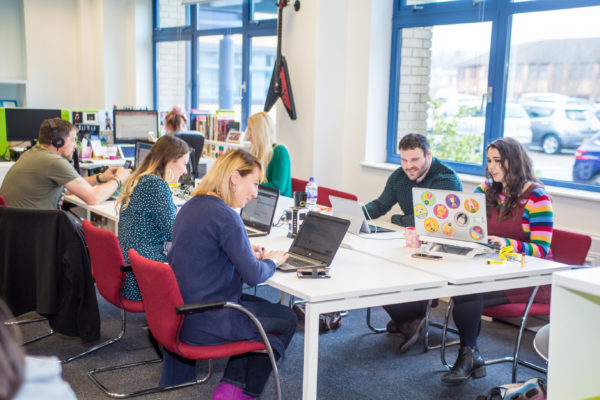Building a sales funnel that actually works doesn’t have to be complicated—but it does need to be intentional. This week on Mind Your Business, we’re breaking down how small business owners can attract more leads, understand where potential customers drop off, and turn casual interest into loyal clients by mapping out a smarter approach to sales.
We’ll explore how psychology plays a key role in buying decisions, why guiding your audience through each stage of the customer journey matters, and how to confidently keep your funnel full without burning out. If you’ve ever wondered how to make sales feel less like selling and more like solving problems—this one’s for you! 🧠

This week, I had the pleasure of speaking with Kelly Watts, a mindset coach who specialises in helping small businesses shine on LinkedIn. Kelly offers expert LinkedIn profile writing and corporate training that covers lead generation and marketing strategies tailored for small businesses. Using buyer psychology, SEO, and brand-personality-driven content, she helps position you and your team as trusted, visible experts both online and offline.
Her approach focuses on attracting ready-to-buy clients, boosting ROI, and growing your business with a strategy that truly fits your unique brand personality. Kelly’s passion for combining mindset coaching with smart marketing makes her insights invaluable for anyone looking to build authentic, lasting connections with their audience.
Understanding Buyer Psychology and the Customer Journey
Understanding how people make purchasing decisions can completely shift the way small businesses approach their marketing and sales. There are 5 personality buying types—logical, authority, emotional, impulse, and aspiration, that influence every decision. “Even the most practical purchases are ultimately guided by emotion”, which is why it’s important to create an emotional connection first, then support it with logic or proof depending on the buyer type.
Rather than guessing what will land with your audience, focus on meeting them where they are in the buying process. “Before we buy, we go through a decision process made up of four key stages: recognition, identification, assessment, and decision.” Some buyers know what they need and actively search for it; others don’t realise the need until they’ve encountered your offer. Helping your audience move through these stages with content that informs, reassures, and inspires will make them far more likely to convert.
“Guiding people through the journey instead of skipping steps creates a deeper connection that turns followers into clients.” For small businesses, this means taking the time to truly understand your customer journey—not just from first contact to purchase, but beyond. From how people discover your brand to how they feel post-purchase, each touchpoint is a chance to build trust, loyalty, and long-term relationships.
When you design your funnel around the real behaviour of your audience, it becomes more than a sales tool—it becomes a customer experience strategy! 💪
Turning Funnel Friction into Funnel Flow
If you’re trying to bring in more leads without stretching yourself too thin, the key is to focus on smart, sustainable strategies that build momentum over time. You don’t need to be everywhere at once but you do need to show up where it matters. Let’s break it down:
🔁 Repurpose and Optimise What’s Already Working
“Repurposing high-performing content across platforms” is one of the easiest ways to keep your brand visible without constantly creating new material. Take what’s resonating—whether it’s a blog post, a social graphic, or a reel and adapt it for different channels. Pair this with “optimising your social media profiles for inbound leads,” making sure your bios, pinned posts, and contact links are set up to convert casual scrollers into engaged prospects.
🎤 Collaborate to Expand Your Reach
“Collaborating, going on podcasts, and getting in front of other people’s audiences” is a powerful way to scale your visibility without spending a penny on ads. These opportunities help you tap into warm audiences who already trust the person introducing you, giving you a huge head start in building that trust factor.
🧪 Diagnose the Drop-Off Points
If you’re getting leads but not converting them into clients, something in the journey likely needs attention. “Confused people don’t buy.” Look at where people stop responding—whether it’s after the discovery call, on your website, or during the email sequence. “People will only buy when they know, like, and trust you,” so focus on making each step clear, compelling, and easy to take.
🔄 Follow Up and Stay Proactive
Lastly, “are you following up with those who show interest, and are you also actively looking for leads?” Don’t let warm leads go cold. A quick follow-up message, a personal invitation, or a check-in email can often be the difference between a no and a yes.

Finding Confidence in Your Sales Strategy
Shifting your mindset around sales can completely change how you show up in your business, especially if you’re a startup founder or solo entrepreneur. Instead of viewing sales as pushy or awkward, reframe it as part of your mission to help people. “You’re not selling, you’re solving a problem.” That shift alone can turn nerves into confidence.
Remember that people are used to making decisions online. “People go on Amazon to buy products—why shouldn’t they buy from you?” That highlights a powerful truth: your audience is ready to buy, they just need to understand the value. So your role is to clearly communicate how your offer fits into their world and solves a real problem.
“This mindset shift helped me go from paralysed with imposter syndrome and afraid to post, to confidently building a business.” Confidence comes when you stop focusing on selling yourself and start focusing on serving others. Once you internalise that, showing up, posting, and talking about your product or service becomes not just easier but energising!🔋


